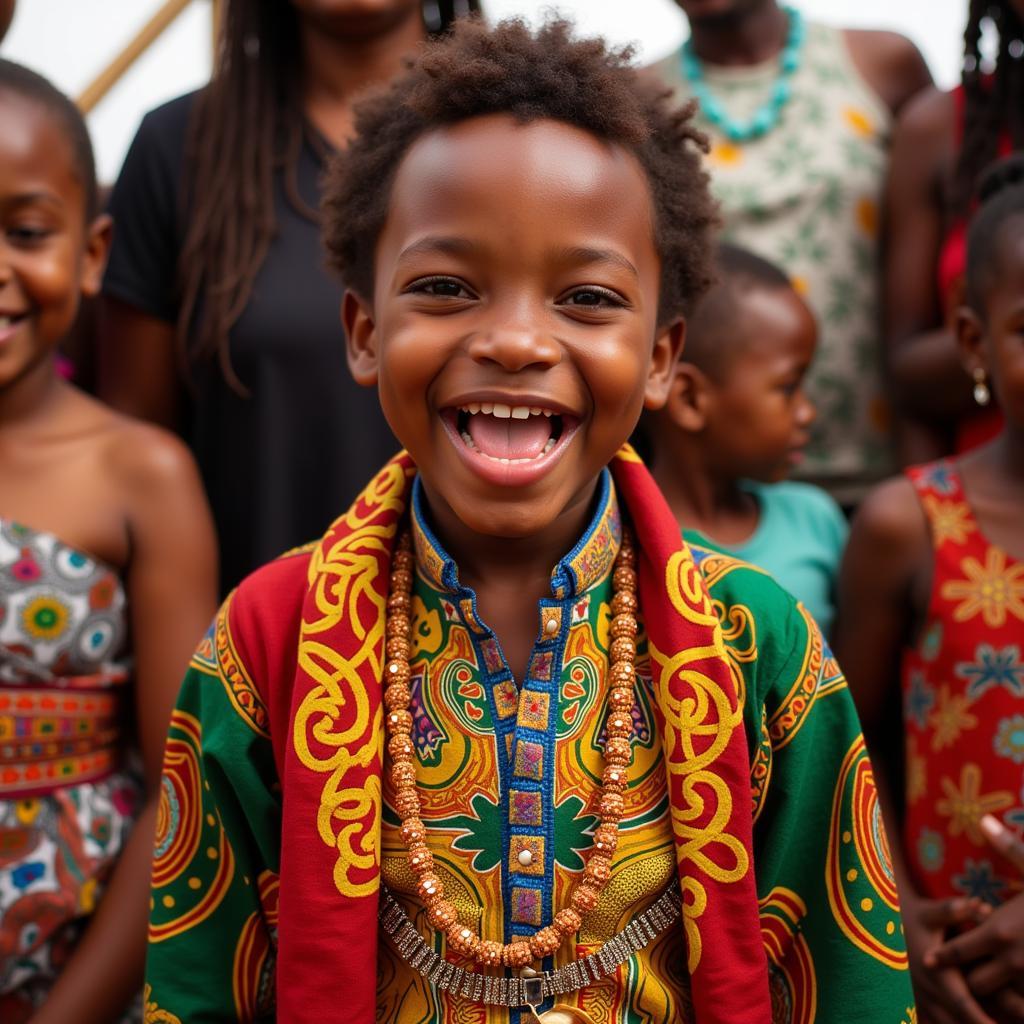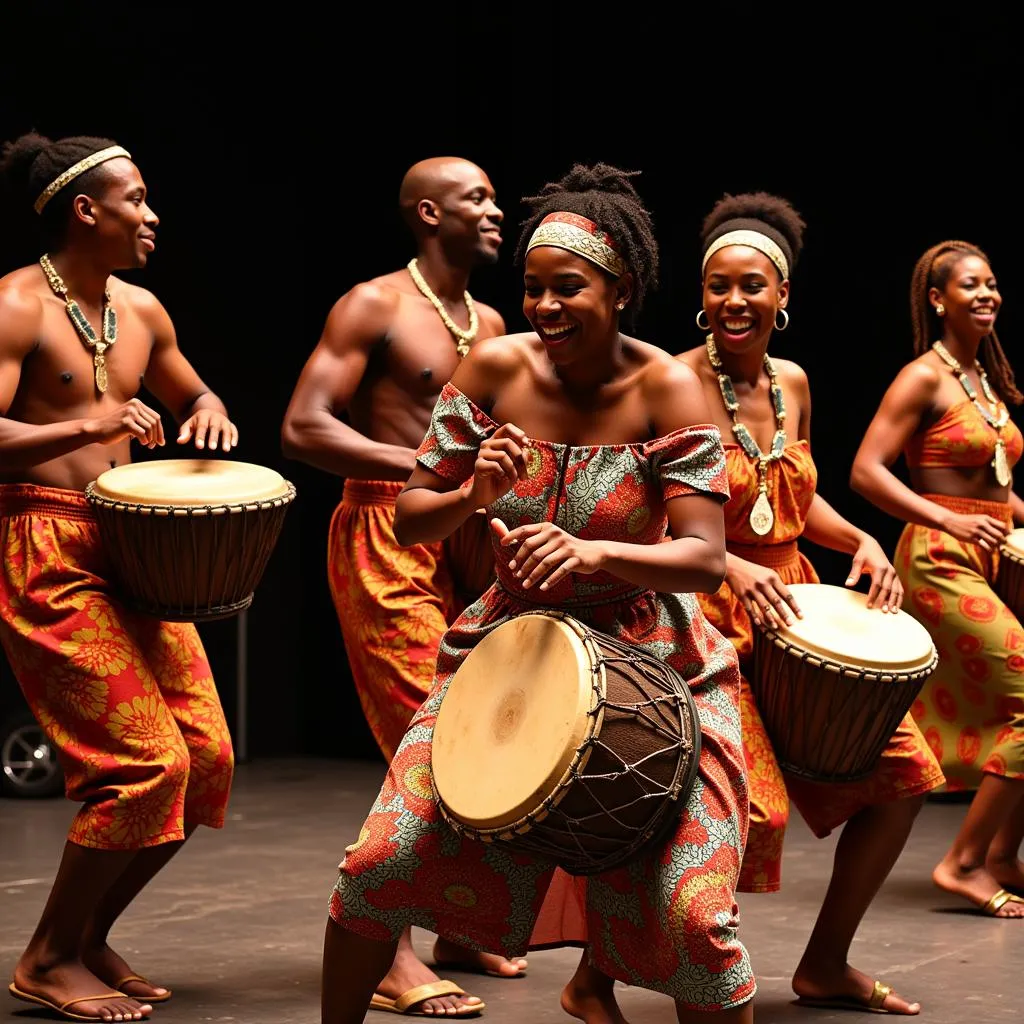Unveiling the Beauty of African Dance: Rhythms, Traditions, and Cultural Significance
African dance, a captivating fusion of rhythmic movements, vibrant costumes, and profound cultural storytelling, holds a significant place in the tapestry of African Life. This ancient art form transcends mere entertainment, serving as a powerful medium for communication, spiritual expression, and societal bonding.
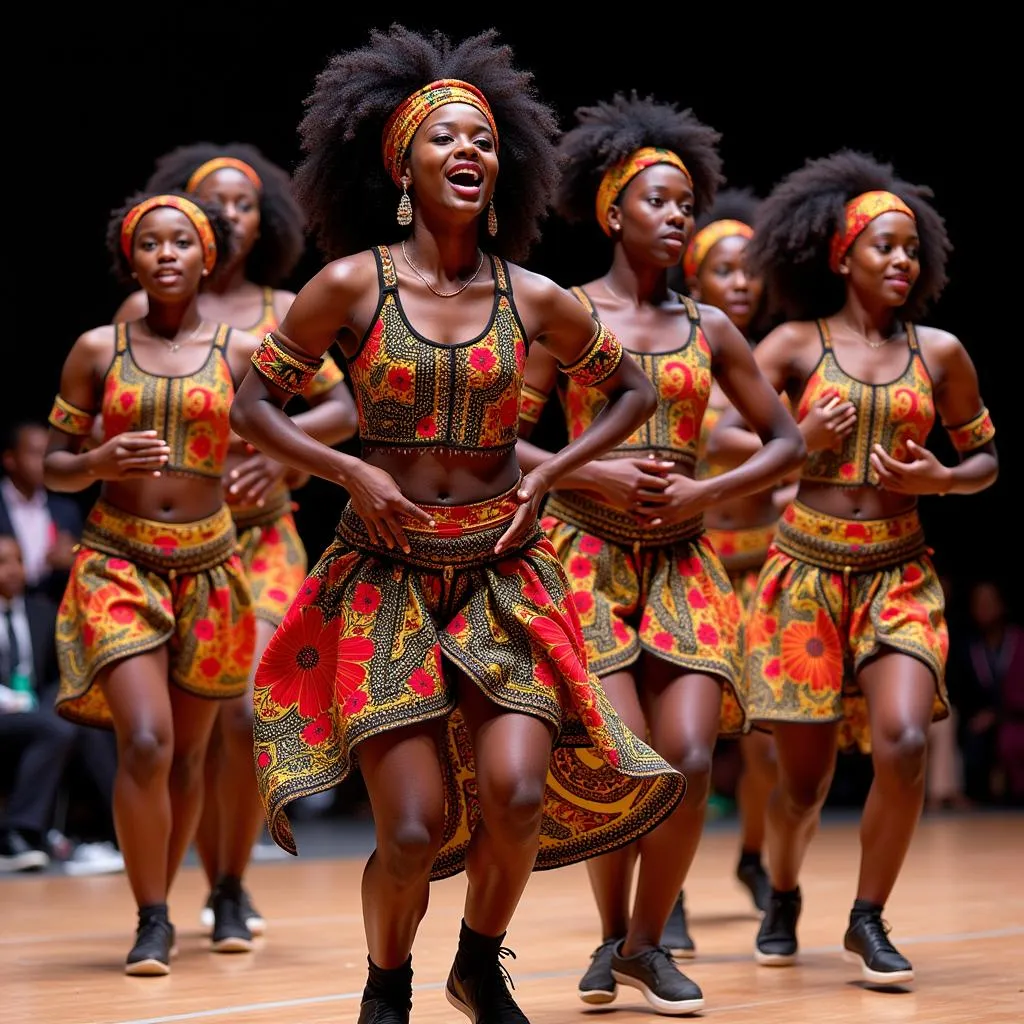 West African Dancers in Traditional Attire
West African Dancers in Traditional Attire
The Language of Movement: Exploring the Diversity of African Dance Styles
From the energetic Gnawa dances of Morocco to the graceful movements of the Gumboot dance in South Africa, the African continent boasts an astounding diversity of dance styles. Each region, country, and even village has developed its unique dance forms, reflecting their specific cultural heritage, beliefs, and way of life.
For instance, the African festivals in Europe offer a glimpse into this rich tapestry of dance, showcasing the diversity and vibrancy of African culture on an international stage. These festivals provide a platform for dancers from different African countries to share their traditions, fostering cross-cultural understanding and appreciation.
Rhythms of Life: The Significance of Music and Percussion
Music forms the heartbeat of African dance. The rhythmic interplay of drums, such as the djembe, talking drum, and the ngoma, sets the tempo and dictates the movements of the dancers. Often accompanied by singing, clapping, and the melodic sounds of traditional instruments, the music creates an immersive experience that transcends mere auditory pleasure.
Imagine the pulsating rhythms of the djembe, each beat resonating with the dancers’ movements, guiding their steps and infusing the performance with an infectious energy. This inseparable connection between music and dance is deeply ingrained in African culture.
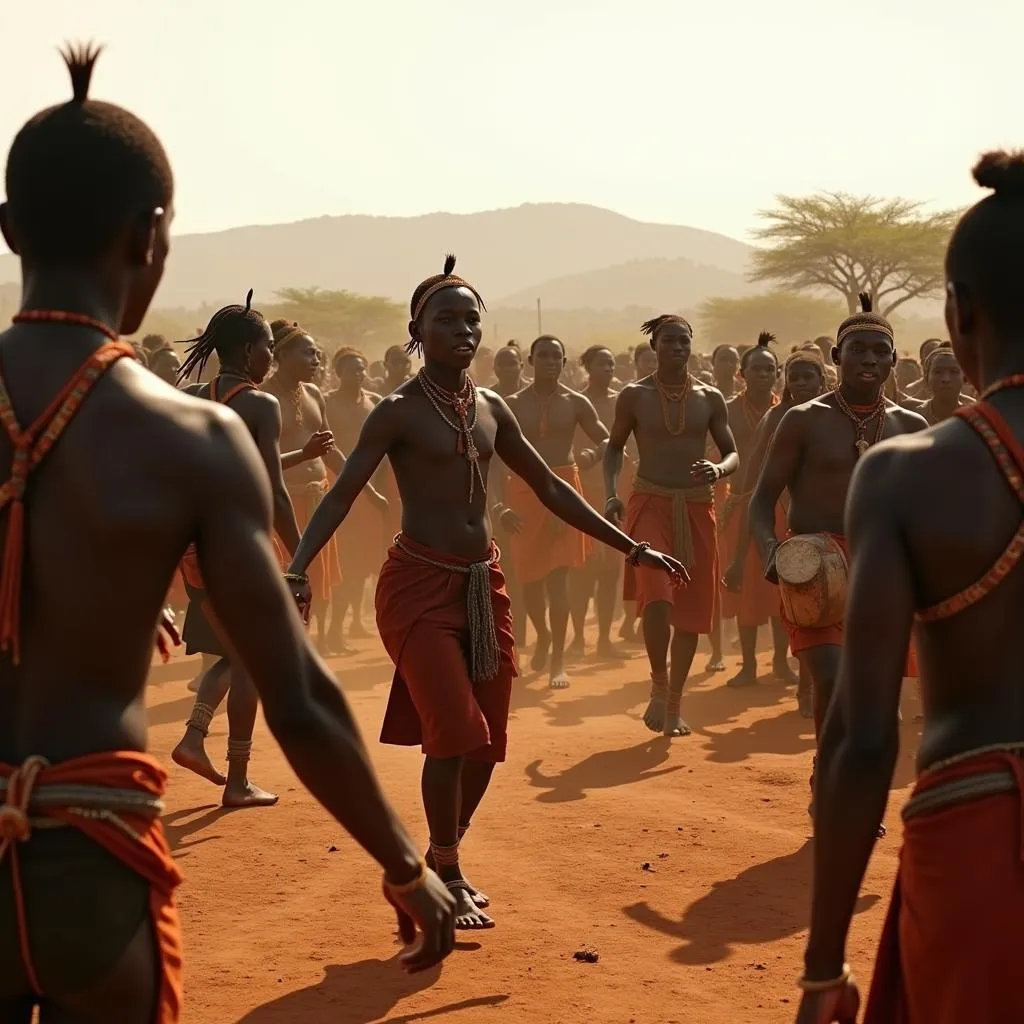 East African Tribal Dance Ceremony
East African Tribal Dance Ceremony
More Than Just Steps: The Cultural Significance of African Dance
African dance is not merely a form of entertainment but a powerful tool for storytelling and cultural preservation. Through intricate movements, gestures, and expressions, dancers convey narratives about their history, myths, and daily life.
For example, the African American influence on American culture can be traced back to the traditions brought over during the transatlantic slave trade. African dance forms evolved and blended with other cultural influences, shaping the landscape of American dance and music.
Ritual and Celebration: The Social Aspects of African Dance
Beyond its artistic and cultural value, African dance plays a vital role in social gatherings, rituals, and ceremonies. From weddings and funerals to harvest festivals and initiation rites, dance serves as a unifying force, bringing communities together to celebrate, mourn, or mark significant life events.
The communal aspect of African dance fosters a sense of belonging and shared identity. It transcends age, gender, and social status, creating a space where everyone can participate and express themselves through movement.
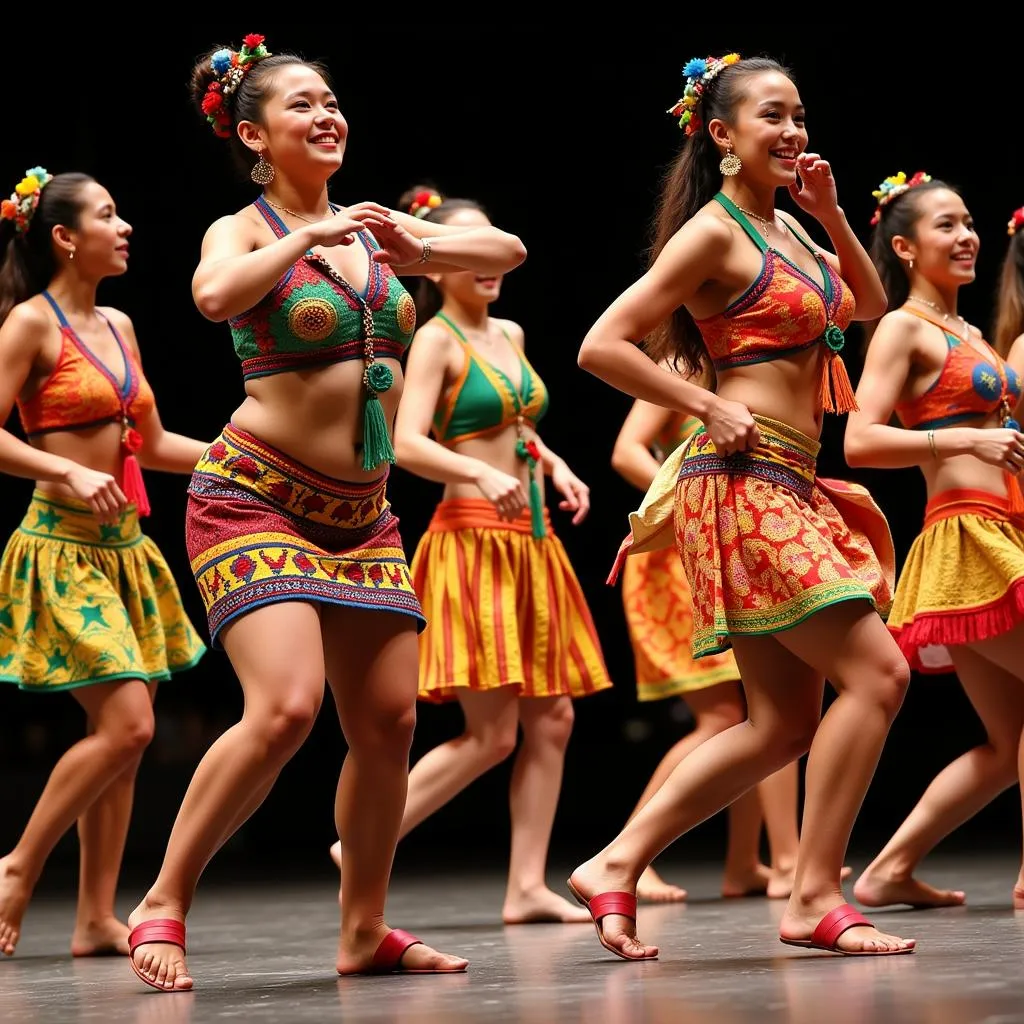 South African Dancers Celebrating Heritage
South African Dancers Celebrating Heritage
Frequently Asked Questions about African Dance
What are the different types of African dance?
Africa boasts a vast array of dance styles, each with unique movements and cultural significance. Some popular examples include:
- Gnawa (Morocco): Characterized by its spiritual nature and use of traditional instruments like the krakebs (metal castanets).
- Gumboot (South Africa): Originating from the mines of South Africa, this dance form uses wellington boots to create rhythmic sounds.
- Moribayasa (Guinea): A high-energy dance performed by women, known for its acrobatic elements.
- Indlamu (South Africa): A powerful and warrior-like dance performed by Zulu men.
What is the significance of costumes in African dance?
Costumes play a crucial role in African dance, often reflecting the cultural heritage and traditions of the dancers. They are not merely decorative but hold symbolic meaning and can vary greatly depending on the occasion and the dance style.
How is African dance used to tell stories?
African dance is a powerful storytelling medium. Dancers use intricate movements, gestures, and facial expressions to convey narratives about their history, myths, and daily life. They act as storytellers, using their bodies to bring tales to life.
Conclusion: Embracing the Beauty and Diversity of African Dance
From the pulsating rhythms to the vibrant costumes and the profound cultural significance, African dance offers a captivating glimpse into the soul of a continent. Whether it’s a celebratory dance at a village festival or a spiritual performance passed down through generations, the beauty of African dance lies in its ability to connect people to their heritage, their communities, and the power of human expression.
Let the rhythms of Africa move you, explore the diverse styles, and appreciate the cultural richness embedded in every step.
Expert Insight: “African dance is more than just movement; it’s a conversation between the body, the spirit, and the community.” – Abena Nkrumah, Ghanaian dance anthropologist
Expert Insight: “Every gesture in African dance tells a story. It’s a living archive of traditions, beliefs, and historical narratives.” – Adebayo Olajide, Nigerian choreographer
Need assistance exploring the world of African dance further? Contact us at:
- Phone Number: +255768904061
- Email: [email protected]
- Address: Mbarali DC Mawindi, Kangaga, Tanzania.
Our dedicated team is available 24/7 to assist you. Discover more about African culture and other fascinating topics on our website.

